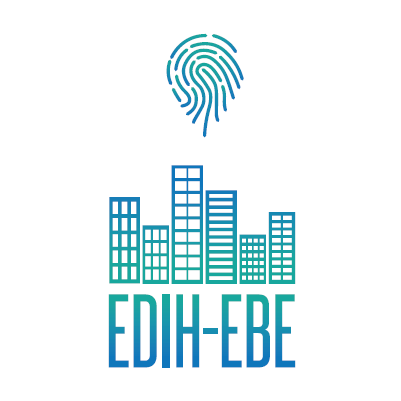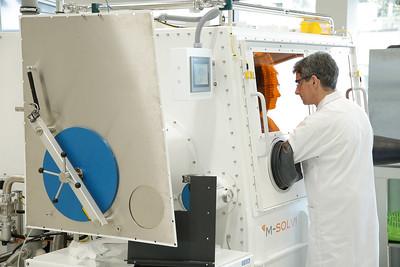Physical labs offer the possibility to test and validate hardware products. EDIH-EBE offers support with detailed monitoring under different conditions and models to facilitate advanced operating strategies. In addition, augmented and virtual reality laboratories make it possible to introduce new application packages to different hardware platforms.
What are the possibilities? A few examples:
- Testing PV systems with emphasis on smart control.
- Test infrastructure for the response of electrical grids.
- Validating products for a demand-driven approach.
- Integrating digital components for smart buildings or thermal applications.
- Augmented and virtual reality to introduce new application packages to different hardware platforms.
Test infrastructure for photovoltaic (PV) systems
-
Digital twins of energy systems for buildings contain configured models of the different components that need to be validated with laboratory tests of hardware. We offer test setups for validating PV modules, BIPV panels, power invertors, LVDC network controllers and securities, etc.
-
At EnergyVille, we are able to measure the performance of new PV module techniques. We can also integrate extra sensors in products to measure temperature and mechanical impact during production and in use. These tests (humidity freeze, thermal cycling, IV, flashing, EQE, …) then provide characteristics that can be used to model and predict energy yields over the lifetime as output .
Test infrastructure for response of electrical grids
- Testing the response of electrical grid components in representative network models. Application examples: interoperability tests of smart grid communication services and protocols; automated characterization and reliability tests of security systems for AC and DC electricity systems; proof of concept tests of cyber security.
Test infrastructure for demand-driven approach
-
Testing and evaluating demand response characteristics of every demand response device and the corresponding safe communication protocols.
-
Analysis of charging and fast charging data and algorithms to allow smart charging, taking the application and network context and the local electricity generation into account.
-
Testing battery cells and battery packs.
-
Testing thermal based systems (water heating and -storage, district heating stations, heat pumps).
Test infrastructure for smart buildings
- Supporting companies to obtain access to specific measurement data in SmarThor/STORM District Energy Controller to experiment new solutions.
- Integration of device communication to a local controller of the ‘SmarThor’ living lab cloud for interaction with advanced forecasting, modeling and control methods.
- Interfaces with which third parties can have access to specific energy and building data, in order to further develop solutions by means of the SmarThor platform; supporting companies through benchmarking of different designs, dimensioning, optimisation strategies (using AI where relevant).
- Testing district heating network controllers.
- Testing sustainable heat production systems.
- Testing integrated sustainable heat applications.
- Business evaluation to explore potential added value for business models through simulation by connecting designs, dimensioning, tariff structures and price signals with datasets and models related to district heating, heat storage (central and distributed), heat sources such as solar thermal, etc.
Virtual reality lab
- Demonstration of 'Augmented and Virtual Reality' -hardware and -software.
- Businesses (individually or in groups) gain access to infrastructure that is fully mobile and allows for tuning and demonstration of new application packages on different hardware platforms.

